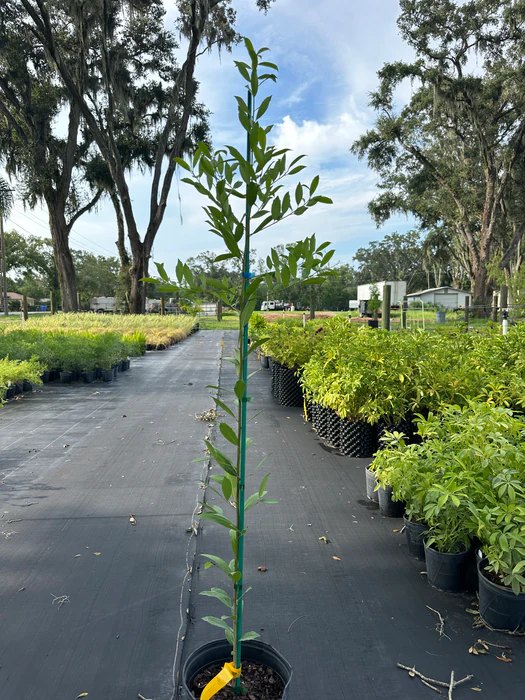
Eagleston Holly
Best Growing Environment
Eagleston Holly (Ilex x attenuata 'Eagleston') is a versatile evergreen tree that thrives in a range of environments, making it a popular choice for landscapes and gardens. It prefers well-drained, slightly acidic to neutral soil but can adapt to various soil types, including sandy, loamy, and clay soils. The ideal growing environment for Eagleston Holly includes full sun to partial shade. While it can tolerate some shade, full sun exposure promotes denser foliage and more abundant fruit production. This holly variety is also tolerant of urban pollution, making it suitable for city landscapes.
Common Names
- Eagleston Holly
- Eagleston Hybrid Holly
- Ilex x attenuata 'Eagleston'
Average Height and Diameter
Eagleston Holly typically reaches an average height of 15 to 25 feet (4.5 to 7.5 meters) when mature, with a spread of about 10 to 15 feet (3 to 4.5 meters). The tree has a pyramidal shape, with dense, dark green foliage and small, red berries that add ornamental value.
Growth Rate
Eagleston Holly has a moderate growth rate, generally growing 12 to 24 inches (30 to 60 cm) per year under optimal conditions. Regular watering, proper fertilization, and adequate sunlight can enhance its growth rate and overall health.
Sun Requirements
Eagleston Holly performs best in full sun to partial shade. It requires at least 4 to 6 hours of direct sunlight each day to maintain its dense foliage and produce berries. Full sun exposure is preferable for optimal growth and berry production, but it can tolerate some shade, especially in hotter climates.
Cold Hardiness
Eagleston Holly is hardy in USDA zones 6 to 9. It can tolerate temperatures down to about -10°F (-23°C) when mature. In colder zones, providing some winter protection, such as mulching around the base and using windbreaks, can help prevent damage from extreme cold and drying winds.
Water Requirements
Eagleston Holly prefers evenly moist, well-drained soil. Young trees need regular watering to establish a strong root system, typically requiring deep watering once or twice a week. Mature trees are moderately drought-tolerant but benefit from supplemental watering during prolonged dry periods. Consistent moisture levels help maintain healthy foliage and berry production.
Detailed Fertilizing Guide
- First Year: Fertilize young Eagleston Holly trees in early spring and again in mid-summer using a balanced, slow-release fertilizer such as 10-10-10. Follow the manufacturer's instructions for application rates based on tree size.
- Second Year Onward: Apply fertilizer three times a year—in early spring, early summer, and early fall. Use a balanced fertilizer (10-10-10) or one with slightly higher nitrogen content (12-6-6) to support healthy foliage and overall growth.
- Organic Options: Organic fertilizers such as compost, well-rotted manure, or fish emulsion can provide a steady supply of nutrients. Apply compost or manure in a 2 to 3-inch (5 to 7.5 cm) layer around the base of the tree in spring and fall.
- Micronutrients: Apply a micronutrient spray containing iron, manganese, and zinc periodically to address any potential deficiencies and promote overall tree health.
Planting Guide
- Site Selection: Choose a location with full sun to partial shade and well-drained soil. Ensure there is enough space for the tree to reach its mature size without crowding other plants or structures.
- Soil Preparation: Amend the soil with organic matter such as compost to improve fertility and drainage. Dig a hole twice the width of the root ball and just as deep.
- Planting: Place the tree in the hole, ensuring the top of the root ball is level with the surrounding soil. Backfill with soil, gently firming it around the roots to remove air pockets. Water thoroughly after planting.
- Mulching: Apply a 2 to 3-inch (5 to 7.5 cm) layer of mulch around the base of the tree, keeping it away from the trunk to prevent rot. Mulch helps retain moisture and suppress weeds.
- Staking: Young trees may benefit from staking to provide support and encourage straight growth. Use flexible ties and avoid damaging the trunk.

